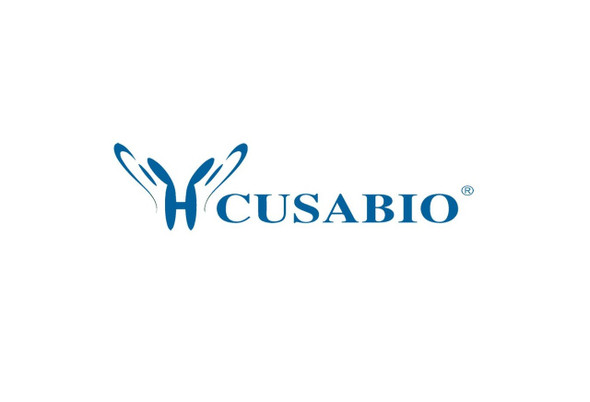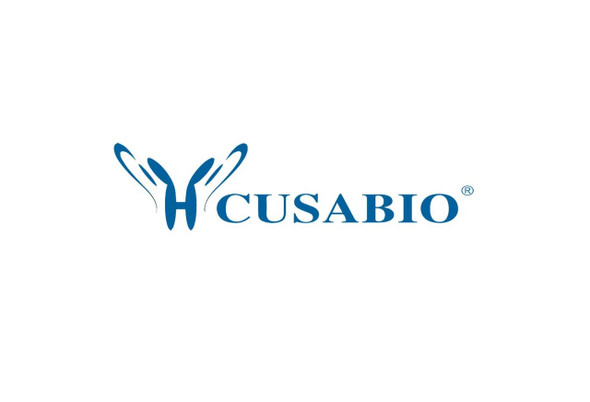Cusabio Active Proteins
Recombinant Human Kit ligand protein (KITLG) (Active) | CSB-AP002061HU
- SKU:
- CSB-AP002061HU
- Availability:
- 5 to 10 Working Days
Description
Recombinant Human Kit ligand protein (KITLG) (Active) | CSB-AP002061HU | Cusabio
Protein Description: Partial
Alternative Name (s) : Mast cell growth factor, Stem cell factor, SCF, c-Kit ligand,
Gene Names: KITLG,MGF,SCF
Research Areas: Immunology
Species: Homo sapiens (Human)
Source: E.Coli
Tag Info: Tag-Free
Expression Region: 26-189aa
Sequence Info: EGICRNRVTN NVKDVTKLVA NLPKDYMITL KYVPGMDVLP SHCWISEMVV QLSDSLTDLL DKFSNISEGL SNYSIIDKLV NIVDDLVECV KENSSKDLKK SFKSPEPRLF TPEEFFRIFN RSIDAFKDFV VASETSDCVV SSTLSPEKDS RVSVTKPFML PPVA
Biological Activity: Fully biologically active when compared to standard. The ED50 as determined by a cell proliferation assay using human TF-1 cells is less than 2 ng/ml, corresponding to a specific activity of > 5.0 × 105 IU/mg.
MW: 18.5 kDa
Purity: >97% as determined by SDS-PAGE and HPLC.
Endotoxin: Less than 1.0 EU/µg as determined by LAL method.
Relevance: Ligand for the receptor-type protein-tyrosine kinase KIT. Plays an essential role in the regulation of cell survival and proliferation, hematopoiesis, stem cell maintenance, gametogenesis, mast cell development, migration and function, and in melanogenesis. KITLG/SCF binding can activate several signaling pathways. Promotes phosphorylation of PIK3R1, the regulatory subunit of phosphatidylinositol 3-kinase, and subsequent activation of the kinase AKT1. KITLG/SCF and KIT also transmit signals via GRB2 and activation of RAS, RAF1 and the MAP kinases MAPK1/ERK2 and/or MAPK3/ERK1. KITLG/SCF and KIT promote activation of STAT family members STAT1, STAT3 and STAT5. KITLG/SCF and KIT promote activation of PLCG1, leading to the production of the cellular signaling molecules diacylglycerol and inositol 1,4,5-trisphosphate. KITLG/SCF acts synergistically with other cytokines, probably interleukins.
PubMed ID: 1724381
Notes: Repeated freezing and thawing is not recommended. Store working aliquots at 4℃ for up to one week.
Function: Ligand for the receptor-type protein-tyrosine kinase KIT. Plays an essential role in the regulation of cell survival and proliferation, hematopoiesis, stem cell maintenance, gametogenesis, mast cell development, migration and function, and in melanogenesis. KITLG/SCF binding can activate several signaling pathways. Promotes phosphorylation of PIK3R1, the regulatory subunit of phosphatidylinositol 3-kinase, and subsequent activation of the kinase AKT1. KITLG/SCF and KIT also transmit signals via GRB2 and activation of RAS, RAF1 and the MAP kinases MAPK1/ERK2 and/or MAPK3/ERK1. KITLG/SCF and KIT promote activation of STAT family members STAT1, STAT3 and STAT5. KITLG/SCF and KIT promote activation of PLCG1, leading to the production of the cellular signaling molecules diacylglycerol and inositol 1,4,5-trisphosphate. KITLG/SCF acts synergistically with other cytokines, probably interleukins.
Involvement in disease: Hyperpigmentation with or without hypopigmentation, familial progressive (FPHH) ; Deafness, congenital, unilateral or asymmetric (DCUA)
Subcellular Location: Isoform 1: Cell membrane, Single-pass type I membrane protein, SUBCELLULAR LOCATION: Isoform 2: Cytoplasm, Cytoplasm, cytoskeleton, Cell membrane, Single-pass type I membrane protein, Cell projection, lamellipodium, Cell projection, filopodium, SUBCELLULAR LOCATION: Soluble KIT ligand: Secreted
Protein Families: SCF family
Tissue Specificity:
Paythway: MAPKsignalingpathway
Form: Lyophilized powder
Buffer: Lyophilized from a 0.2 µm filtered PBS, pH 7.4
Reconstitution: We recommend that this vial be briefly centrifuged prior to opening to bring the contents to the bottom. Please reconstitute protein in deionized sterile water to a concentration of 0.1-1.0 mg/mL.We recommend to add 5-50% of glycerol (final concentration) and aliquot for long-term storage at -20℃/-80℃. Our default final concentration of glycerol is 50%. Customers could use it as reference.
Uniprot ID: P21583
Uniprot Entry Name: SCF_HUMAN
HGNC Database Link: HGNC
UniGene Database Link: UniGene
KEGG Database Link: KEGG
STRING Database Link: STRING
OMIM Database Link: OMIM










